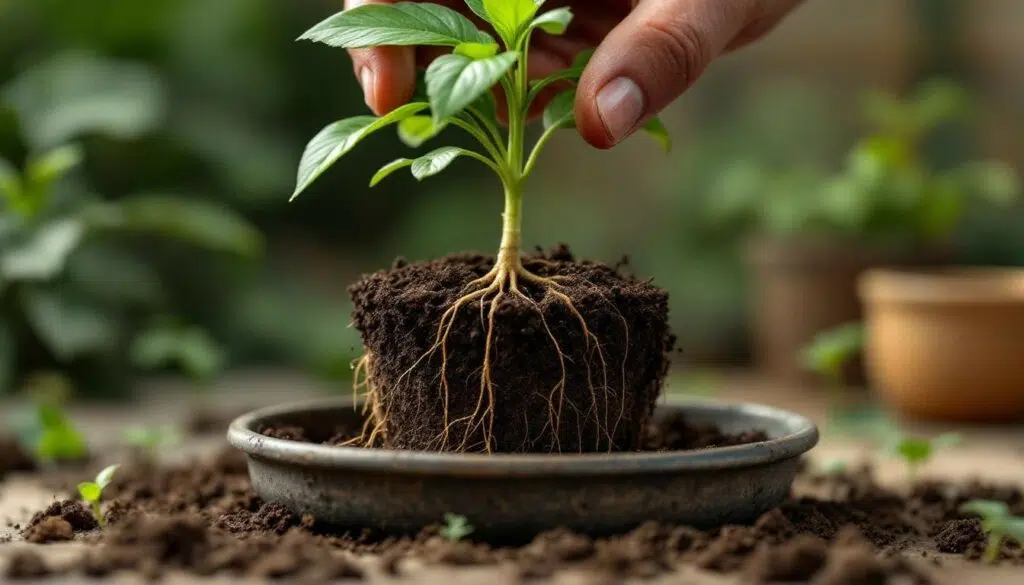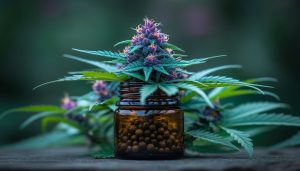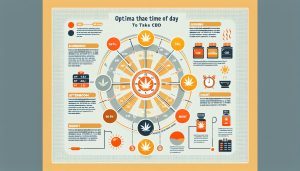Root development is a fundamental pillar in CBD cultivation. However, repotting or transplanting is sometimes underestimated, even though it directly determines plant health and optimal growth. Whether you’re a beginner or an experienced grower, knowing the optimal time to transplant and understanding the risks of root blockage is essential for achieving a bountiful harvest while limiting plant stress throughout the life cycle. Mastering these steps allows you to optimize each growing phase and provide your CBD plants with the best conditions, whether you’re growing with the specialized products offered by weedy.fr or in your own space. The Importance of Repotting in CBD Plant Development Repotting is not a mere formality but a key step that ensures sufficient space for the roots, thus preventing root congestion and its harmful consequences. A healthy root system promotes optimal water and nutrient absorption throughout the entire flowering cycle, ensuring vigorous growth. Neglecting this step exposes growers to stagnant root development. Roots find themselves circling in the pot, searching for space until they become blocked, limiting optimal growth. Symptoms quickly appear: yellowing leaves, reduced yield, and even premature wilting of the stems. This situation can be avoided with well-planned repotting and suitable media, such as those available on weedy.fr. To learn more about best practices for different outdoor conditions, it’s worth taking a look at the benefits of growing CBD outdoors, which details environmental management and the benefits of natural growth in the open air. How to identify the optimal time to transplant? Knowing how to detect the The ideal time to transplant makes all the difference between a thriving plant and a struggling one. Several signs can help anticipate this crucial transition and avoid unnecessary stress due to root blockage. Carefully observing your plant as it grows allows you to quickly spot warning signs that it needs a repot. This regular monitoring helps maintain plant health and prepares for a successful transfer to a more suitable space. If you are growing in France, it may be useful to consult information on hemp cultivation in France to better understand the legislative aspects and prospects for optimizing your harvests. Visual signs indicating the need to repot Among the main indicators are yellowing leaves without apparent cause, white roots protruding through drainage holes, or very rapid water absorption. These signs clearly indicate that root space is becoming limited. Intervening at these first signs significantly reduces plant stress and ensures a smoother adaptation after transplanting. Another reliable criterion is the comparison between foliage density and pot size. If the crown appears overdeveloped compared to the available substrate volume, it’s time to move to a larger container to support optimal growth until flowering. Key development periods to intervene Transplanting just before the start of the flowering cycle maximizes vigor, as the majority of root expansion occurs during the vegetative period. Waiting until the roots have colonized the entire substrate, but without becoming overcrowded, promotes better rooting later on. Some CBD varieties better express their potential if they have a larger substrate volume.as soon as the lateral branches appear. Adapting the repotting schedule according to the genetics cultivated, such as those proposed by weedy.fr, significantly optimizes the final result. Concrete steps for successful CBD plant transplantation The success of a transplantation depends as much on the method chosen as on the support used. A excessive stress may lead to a temporary slowdown in growth, or even compromise part of the
Sommaire
Toggleyield
. By properly preparing the environment and respecting certain techniques, we promote a rapid recovery of the root system , essential for continued and healthy growth.Prepare the environment and the new potBefore transplanting, provide a clean pot and sized according to the desired final capacity. Use a fresh substrate , balanced in nutrients, accelerates the recovery of the root system. The slight moistening of the earth facilitates anchoring without causing settlement.It is recommended to handle the plants gently, ideally wearing gloves and holding the base of the stem. Any root injury risks causing a
prolonged stress , delaying the resumption of growth.Effective techniques and actions to adopt To remove the plant, gently tilt the pot then tap the sides to release the root ball. Then place the rootball in the new container, fill the gaps with substrate and water generously to eliminate air pockets around the roots.roots .A light mulchingafter watering helps to retain the humidity of the substrate, reducing dehydration and stimulating the recovery of
optimal growth
. This gesture, associated with the use of natural root stimulants, promotes a successful transition. Choose a pot 2 to 4 times larger during each transplant Carry out the repotting at the end of the day or in dim light Use a natural root stimulatorTo enhance recovery
Monitor the plant daily after the transferEffects of transplant stress and risk management Transplanting always causes some plant stress
, especially if it occurs late in the
growth cycle . However, by adopting the right practices, it is possible to significantly limit its negative effects. The main risk lies in sudden disruption of the root system, leading to slowed growth, leaf drop, or general weakening. Following professional advice and using suitable equipment, such as that available on weedy.fr, ensures a smooth transitionand rapid resumption of plant growth. Transplanting Stage Potential Difficulty Tips for a Successful Transition Removing from the Initial Pot
Root Injuries Tilt the pot gently; never pull the stem hard Placement in the New Pot Formation of Air PocketsWater immediately after filling the substrate
First Days After Transplanting
Water or Light Stress Maintain constant humidity, avoid direct sunlight What impact on the final yield and quality of the harvest?
Providing adequate root space and preventing root blockage significantly improves yield and flower quality at harvest. Slowed or interrupted growth due to root congestion results in less biomass and therefore fewer cannabidiol-rich flowers. Continuous access to water and nutrients, enabled by a vigorous root system, not only strengthens the plant’s structure but also stimulates terpene and trichome production. Taking care of underground growth, through appropriate practices and quality products from weedy.fr, optimizes all stages of the flowering cycle until full maturation. Long-term reduction of nutritional deficiencies Optimization of vegetative and floral vigor
Measurable increase in harvested flower weight
Improved resistance to pests and diseases Frequently asked questions about repotting CBD plants What are the main signs of root blockage in CBD plants? Root blockage manifests itself by a visible slowdown in growth, often accompanied by pale or yellow leaves despite adequate fertilizer. Visible roots above the surface or protruding from drainage holes indicate a lack of space, while excessive water absorption followed by wilting indicates a saturated root system.Visible roots above the surface or through drainage holes
Leaves wilting quickly despite watering Decreased vigor and flower yieldsHow often should a CBD plant be transplanted?
The ideal frequency varies depending on the variety and growth rate. Generally, at least two transplants are required: the first after germination (plant reaches 10 to 15 cm), then a second before the flowering cycle begins. For large-scale or fast-growing crops, an intermediate stage may be necessary to ensure optimal root development.
Plant Stage Recommended Pot Size Repotting Frequency Seedling (up to 3 weeks)0.5-1 L
After the first true leaves develop Vegetative Period2-7 L
During the active expansion phase
Before flowering 10 L and aboveJust before flowering
Which substrates should you choose for transplanting CBD? Ideally, choose an aerated and well-draining substrate rich in beneficial microorganisms. A mixture of soil and perlite or soil and coco fiber allows good water retention while ensuring sufficient oxygenation. The addition of vermicompost provides a natural complement of nutrients, facilitating recovery after the transplantation.
- Enriched horticultural soil Earth/coconut/perlite mixture
- Mature organic compost Are there any common mistakes to avoid when transplanting?
- Several errors affect the plant health
- when repotting. Excessive watering can cause asphyxiation of the roots
, while a substrate that is too compact limits oxygenation. Roughly handling the roots damages their fragile structure. Finally, exposing the plant directly to the sun after transplantation accentuates the
plant stress . Rough handling of roots Insufficiently draining substrateSudden water or light variations
Alexandre Lacarré is recognized as an innovative and influential leader in the cannabidiol (CBD) industry. Alexandre began his career in the biotechnology sector, where he gained valuable expertise in research and development. Passionate about the therapeutic potential of natural compounds, he quickly shifted his focus to the nascent CBD industry.



